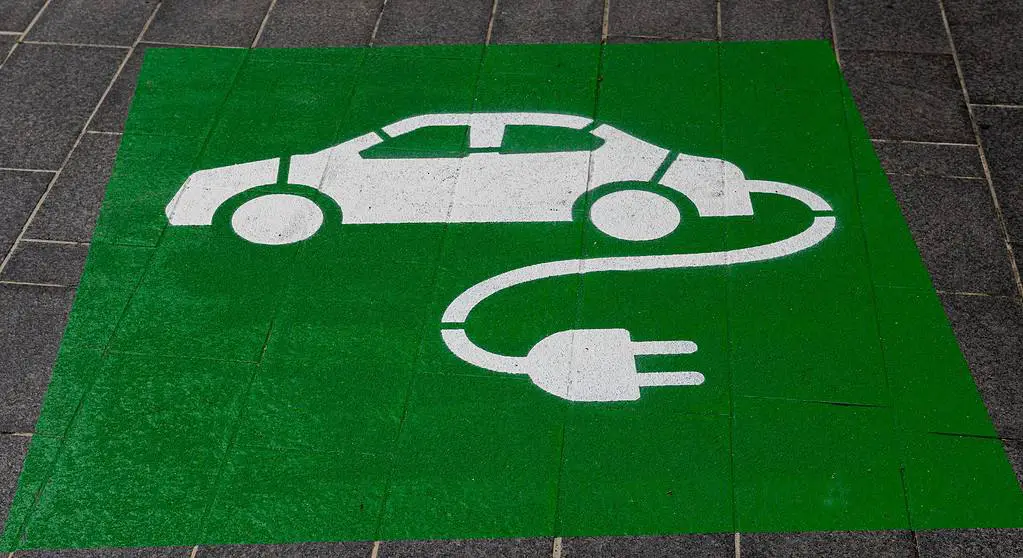In my article titled “Avoiding Range Anxiety: Tips for Extending the Lifespan of Electric Vehicle Batteries,” I explore the concerns and challenges associated with the batteries of electric vehicles (EVs). These batteries not only contribute to range anxiety but also entail significant replacement costs. To address this issue, I provide several practical tips for caring for EV batteries, including keeping them away from extreme temperatures, avoiding overcharging and deep discharging, minimizing fast charging, and practicing economical driving. Implementing these tips can extend the batteries’ lifespan and delay the need for costly replacements. Furthermore, I discuss the development of more efficient EV battery recycling methods by manufacturers and General Motors’ plans to introduce EVs that can provide power backup during outages. Additionally, I touch upon the importance of understanding tire lifespan and proper maintenance practices to maximize their durability. Lastly, I highlight the significance of having essential emergency supplies in vehicles, especially in snow-prone regions, to ensure preparedness for unexpected situations.

This image is property of www.themanual.com.
Understanding Range Anxiety
Concept of range anxiety
Range anxiety is a term commonly used to describe the fear or concern that electric vehicle (EV) drivers have about running out of battery power before reaching their desired destination. This anxiety arises from the limited range of EVs compared to traditional gasoline-powered vehicles. Unlike gasoline cars, which can easily be refueled at numerous gas stations, the availability of charging stations for EVs is still limited, making drivers anxious about finding a charging point when needed.
Common causes of range anxiety
Range anxiety is primarily caused by the limited range of electric vehicles and the lack of charging infrastructure. Most electric vehicles currently available in the market have a range of about 150 to 300 miles on a single charge. This range can vary depending on the driving conditions, such as weather, terrain, and speed. The limited range often leads to concerns about being stranded without access to a charging station.
Furthermore, the lack of a well-developed charging infrastructure adds to the range anxiety problem. While major cities and developed countries have invested in charging stations, rural areas and less-developed regions typically have a scarcity of charging points. This makes long-distance travel and intercity trips challenging, causing drivers to worry about finding a charger when needed.
Impact of range anxiety on electric vehicle users
Range anxiety can have a significant impact on the overall experience of electric vehicle users. It creates a sense of uncertainty and worry, which affects their confidence in relying solely on electric vehicles for their transportation needs. The fear of running out of battery power can deter potential buyers from adopting electric vehicles, limit long-distance travel options, and increase the dependence on traditional gasoline vehicles.
Range anxiety also affects the daily driving habits of electric vehicle users. Instead of using the vehicle to its full potential, drivers may opt for shorter trips or avoid taking their EV on long journeys. This reduces the efficiency and convenience of owning an electric vehicle. To address this issue, it is crucial to promote charging infrastructure expansion and educate users about the actual range capabilities of electric vehicles.
Fallacies on EV Batteries Lifespan
Misconceptions about electric vehicle batteries lifespan
One of the common misconceptions about electric vehicle batteries is that they have a short lifespan compared to traditional car batteries. This misconception stems from the misconception of associating battery lifespan with the warranty period offered by EV manufacturers. While the warranty period may range from 8 to 10 years, it does not imply that the battery will fail or deteriorate significantly after that span.
Another fallacy is that the battery lifespan decreases significantly as the vehicle ages. In reality, the battery degradation is gradual and depends on various factors such as charging habits, temperature exposure, and environmental conditions. With proper care and maintenance, electric vehicle batteries can last well beyond the warranty period.
Understanding electric vehicle battery life cycle
To understand the lifespan of electric vehicle batteries, it is essential to comprehend the battery life cycle. Electric vehicle batteries undergo charging and discharging cycles as they provide energy to power the vehicle. Each cycle contributes to the gradual degradation of the battery, reducing its overall capacity over time.
The life cycle of an electric vehicle battery is typically measured in terms of complete charge and discharge cycles. A complete cycle is defined as using the battery’s full capacity from 100% charge to 0% charge and back to 100% charge. The number of complete cycles a battery can undergo before significant capacity degradation varies depending on the battery chemistry and design.
Factors determining electric vehicle battery lifespan
Several factors affect the lifespan of electric vehicle batteries. One of the significant factors is the battery chemistry. Different battery chemistries, such as lithium-ion, lithium-polymer, and solid-state batteries, have varying lifespans and degradation rates. Manufacturers are continuously improving battery chemistries to enhance their longevity and performance.
Charging habits also play a crucial role in determining the battery lifespan. Overcharging or letting the battery reach extremely low levels frequently can accelerate degradation. It is important to avoid these extremes and maintain the battery within the recommended state of charge range.
Temperature is another critical factor that affects battery lifespan. High temperatures can accelerate battery degradation, while extremely low temperatures can reduce the battery’s usable capacity temporarily. It is essential to keep the battery within the recommended temperature range to ensure optimal performance and longevity.
Other factors such as environmental conditions, driving habits, and proper maintenance also influence the lifespan of electric vehicle batteries. It is crucial for electric vehicle owners to be aware of these factors and take appropriate measures to maximize the battery’s lifespan.
Common EV Battery Mishandling and Its Impact
Impact of extreme temperatures on EV battery
Extreme temperatures, both hot and cold, can have a detrimental impact on the performance and lifespan of electric vehicle batteries. High temperatures can accelerate the chemical reactions inside the battery, leading to faster degradation of the electrodes and electrolyte. This degradation can result in reduced battery capacity and overall performance.
On the other hand, extremely low temperatures can slow down the chemical reactions inside the battery, reducing its ability to deliver power efficiently. Cold temperatures can also increase the battery’s internal resistance, leading to decreased range and performance.
To mitigate the impact of extreme temperatures, it is important to park electric vehicles in shaded areas or garages during hot weather. In cold weather, pre-conditioning the vehicle’s cabin while connected to a charger can help warm up the battery and improve its performance. Additionally, using battery thermal management systems can regulate the temperature of the battery pack, ensuring it remains within the optimal temperature range.
How overcharging and depleting the battery affects its lifespan
Overcharging and depleting the battery to very low levels can have negative consequences on the overall lifespan of electric vehicle batteries. Overcharging a battery can cause excessive heat generation, which can accelerate chemical reactions and degrade the battery’s electrodes. It is crucial to avoid overcharging by disconnecting the charger once the battery reaches its recommended state of charge.
Similarly, depleting the battery to very low levels frequently can have a detrimental effect on its lifespan. Fully discharging the battery puts additional stress on the electrodes and can lead to irreversible chemical reactions, reducing the battery’s capacity over time. It is advisable to maintain the battery within the recommended state of charge range and avoid frequent deep discharges.
Consequences of frequent fast charging
Fast charging, while convenient, can impact the lifespan of electric vehicle batteries. Fast charging generates heat, which can cause thermal stress on the battery, accelerating its degradation. The rapid influx of energy during fast charging can also cause lithium plating, a phenomenon where lithium ions permanently deposit on the battery’s electrodes, reducing its capacity.
Frequent use of fast charging can result in cumulative damage to the battery over time, leading to reduced capacity and overall lifespan. It is advisable to use fast charging sparingly and rely more on regular-paced charging methods to minimize the impact on the battery’s health.
Driving Habits That Extend EV Battery Lifespan
The need to drive economically
Driving economically can significantly extend the lifespan of an electric vehicle battery. By adopting efficient driving habits, such as gradual acceleration and deceleration, maintaining a steady speed, and avoiding unnecessary rapid acceleration, drivers can reduce the strain on the battery and maximize its efficiency.
Aggressive driving, such as abrupt acceleration and frequent hard braking, not only consumes more energy but also puts additional stress on the battery. By practicing smooth and efficient driving techniques, drivers can optimize the energy consumption and reduce the overall strain on the battery, ultimately extending its lifespan.
Effect of minimizing vehicle usage
Minimizing vehicle usage is another effective way to extend the lifespan of an electric vehicle battery. By reducing the number of miles driven, the battery experiences less wear and tear, resulting in slower capacity degradation over time. Taking alternative modes of transportation, carpooling, or combining trips can help reduce the overall mileage and battery usage.
Additionally, planning routes efficiently and avoiding unnecessary detours can further optimize the battery’s performance. By opting for shorter routes or utilizing charging infrastructure strategically, drivers can minimize the strain on the battery and maximize its lifespan.
Reduction of unnecessary weight
Reducing unnecessary weight in the vehicle can also have a positive impact on the lifespan of an electric vehicle battery. Excess weight increases the energy consumption of the vehicle and puts additional strain on the battery. By removing unnecessary items, such as heavy cargo or unused equipment, drivers can improve the overall efficiency of the vehicle and reduce the load on the battery.
Furthermore, aerodynamic modifications, such as removing rooftop cargo carriers or reducing drag-inducing accessories, can also improve the vehicle’s efficiency and reduce the battery’s workload. By focusing on reducing weight and improving aerodynamics, drivers can enhance both the battery’s lifespan and the overall driving range of the electric vehicle.
Effective Electric Vehicle Battery Care Tips
Proper charging techniques
Proper charging techniques are essential for maintaining the health and extending the lifespan of electric vehicle batteries. It is crucial to follow the manufacturer’s guidelines for charging and avoid overcharging or deep discharging the battery. Charging the battery to its recommended state of charge range and disconnecting the charger once it reaches the desired level helps prevent unnecessary strain on the battery.
Additionally, utilizing advanced charging features, such as scheduled charging or charging during off-peak hours, can optimize the battery’s health and reduce electricity costs. Smart charging systems and mobile applications provide users with the flexibility to control and monitor charging remotely, ensuring efficient and optimal battery charging.
Guidelines for temperature regulation of EV battery
Regulating the temperature of an electric vehicle battery is vital for its longevity and performance. Extreme temperatures, both hot and cold, can negatively impact the battery’s health and accelerate degradation. Utilizing battery thermal management systems, when available, helps maintain the battery within the optimal temperature range, minimizing the adverse effects of temperature extremes.
In hot weather, parking the vehicle in shaded areas or garages can provide protection from excessive heat and reduce the strain on the battery. Pre-conditioning the vehicle’s cabin while connected to a charger can also help warm up the battery and improve its performance in cold weather. It is advisable to avoid exposing the battery to extreme temperatures for extended periods, as it can significantly affect its lifespan.
Scheduled maintenance and checks for EV battery
Scheduled maintenance and regular checks are crucial for preserving the health and longevity of electric vehicle batteries. Following the manufacturer’s recommended maintenance schedule ensures that the battery and other components are inspected and maintained properly.
Regular checks should include monitoring the battery’s state of charge, identifying any abnormalities in its performance, and detecting signs of degradation. Any potential issues should be promptly addressed to prevent further deterioration and preserve the battery’s life. Such checks can be performed by qualified technicians or by utilizing the diagnostic tools and software provided by the vehicle manufacturer.
EV Battery Recycling and Its Importance
Understanding current EV battery recycling methods
As the number of electric vehicles on the roads increases, the importance of proper battery disposal and recycling becomes paramount. Electric vehicle battery recycling involves the collection, disassembly, and extraction of valuable materials from used or end-of-life batteries. Current recycling methods focus on recovering materials like lithium, cobalt, nickel, and other valuable metals from the batteries to be reused in the production of new batteries.
The recycling process typically begins with the collection of used batteries from electric vehicles. These batteries are then disassembled to separate the various components, such as the electrodes, electrolyte, and casing. The extracted materials are then processed and purified, ready for reuse in the manufacturing of new batteries or other applications.
The future of EV battery recycling
Manufacturers and researchers are continuously developing more efficient and sustainable methods for electric vehicle battery recycling. Advanced recycling technologies, such as hydrometallurgical and pyrometallurgical processes, are being explored to enhance the recovery of valuable materials from used batteries. These processes aim to minimize waste, reduce environmental impact, and increase the overall efficiency of the recycling process.
In addition to material recovery, efforts are being made to improve the recycling rate and ensure the safe handling and disposal of batteries. Companies and organizations are collaborating to establish standardized recycling practices and regulations to streamline the recycling process and maximize the environmental benefits.
How recycling contributes to EV battery lifespan
Battery recycling plays a vital role in extending the lifespan of electric vehicle batteries. By recycling used batteries, valuable materials can be recovered and reused, reducing the demand for newly mined resources. This not only conserves natural resources but also reduces the environmental impact associated with raw material extraction and processing.
Moreover, recycling helps close the materials loop, creating a more sustainable and circular economy for electric vehicle batteries. By recovering and reusing materials from used batteries, the production of new batteries becomes more environmentally friendly and less reliant on the extraction of finite resources.
Through recycling, the overall lifespan of electric vehicle batteries can be extended, making them a more sustainable and economically viable option for transportation.

This image is property of images.unsplash.com.
Advancements in EV Battery Technology
Improvements made by manufacturers
Manufacturers are continuously striving to improve the performance, efficiency, and longevity of electric vehicle batteries. Significant advancements have been made in battery technology, resulting in batteries with higher energy densities, faster charging capabilities, and longer lifespans.
One of the key areas of improvement is in the development of battery chemistries. Manufacturers are exploring various chemistries, such as solid-state batteries and lithium-sulfur batteries, which offer higher energy densities and improved safety. These advancements aim to increase the driving range of electric vehicles and enhance the overall efficiency of the battery.
Additionally, advancements in battery management systems (BMS) have improved the monitoring and control of battery parameters. BMS technologies enable better state of charge estimation, thermal management, and cell balancing, optimizing the battery’s performance and extending its lifespan.
The shift towards more efficient battery technology
The shift towards more efficient battery technology is driven by the need to address the limitations of current battery systems. Manufacturers are exploring alternatives to the commonly used lithium-ion batteries, which offer higher energy densities and improved safety profiles.
Solid-state batteries, for example, use a solid electrolyte instead of the commonly used liquid electrolyte in lithium-ion batteries. This solid-state design offers higher energy densities, faster charging capabilities, and improved safety due to the elimination of flammable liquids. Although still in the early stages of development, solid-state batteries show promising potential for the future of electric vehicles.
Lithium-sulfur batteries are another emerging technology that offers higher energy densities and potentially lower cost compared to traditional lithium-ion batteries. These batteries utilize sulfur as the cathode material, which provides a higher theoretical energy density. However, challenges such as sulfur electrode degradation and limited cycle life are currently being addressed to make lithium-sulfur batteries a viable option for electric vehicles.
Future trends in EV batteries
Several future trends are expected to shape the landscape of electric vehicle batteries. One of the trends is the continuous improvement in energy density, allowing for longer driving ranges and reduced weight. This will enable electric vehicles to compete more effectively with traditional gasoline-powered vehicles in terms of range and versatility.
Another trend is the integration of battery technology with other renewable energy sources, such as solar and wind power. By utilizing the excess energy generated from renewable sources, electric vehicle batteries can be charged more sustainably, reducing the reliance on the electrical grid.
Moreover, advancements in battery manufacturing processes, such as solid-state manufacturing techniques and automated production lines, are expected to drive down the cost of batteries. This cost reduction will make electric vehicles more affordable and accessible to a wider range of consumers.
Overall, the future of electric vehicle batteries holds great potential for improved performance, efficiency, and sustainability, making electric vehicles an increasingly viable option for transportation.
Other Factors Affecting Electric Vehicle Efficiency
Role of tire lifespan and maintenance
The lifespan and maintenance of car tires play a crucial role in the overall efficiency of electric vehicles. Proper tire maintenance, including regular inflation checks, rotation, and alignment, ensures optimal performance and reduces energy consumption.
Underinflated or overinflated tires can significantly impact the rolling resistance of the vehicle, leading to increased energy consumption and reduced driving range. It is important to follow the manufacturer’s recommended tire pressure and conduct regular tire inspections to prevent premature wear and maximize the efficiency of electric vehicles.
Additionally, replacing worn-out tires with low rolling resistance tires specifically designed for electric vehicles can further improve their efficiency. These tires offer reduced friction, resulting in less energy loss during transportation.
Importance of vehicle weight management
Vehicle weight management is a critical aspect of maximizing the efficiency of electric vehicles. Excess weight increases the energy requirements and puts additional strain on the battery, reducing the driving range. By removing unnecessary items from the vehicle and practicing efficient load management, the overall weight can be reduced, leading to increased efficiency and longer driving ranges.
Lightweight materials, such as carbon fiber composites and aluminum alloys, are being incorporated into electric vehicle designs to reduce weight. These materials offer comparable strength to traditional steel while being significantly lighter, contributing to improved energy efficiency.
Effect of climate and weather conditions
Climate and weather conditions can have a significant impact on the efficiency and performance of electric vehicles. Cold weather, for instance, reduces the battery’s capacity and increases internal resistance, resulting in reduced range and slower charging rates. It is important to take these factors into account when planning long trips or relying on the vehicle in extreme weather conditions.
In hot weather, the increased demand for air conditioning can also impact the vehicle’s efficiency. Using energy-efficient climate control settings and pre-conditioning the vehicle while connected to a charger can help mitigate the impact of extreme temperatures on the vehicle’s range.
Furthermore, the use of advanced thermal management systems in electric vehicles can regulate the temperature of the battery and other components, ensuring optimal performance and efficiency in different climate conditions.

This image is property of images.unsplash.com.
Preparation for Emergency Situations in Electric Vehicles
Essential supplies for emergency situations
Preparing for emergency situations is crucial for all vehicle owners, including electric vehicle owners. Essential supplies for emergency situations in electric vehicles include:
- Emergency roadside kit: This should include items such as jumper cables, tire repair tools, a flashlight, reflective triangle, and basic tools.
- Portable charging equipment: In the event of a power outage or inability to find a charging station, having a portable charger or adapter can be a lifesaver. These portable chargers can be connected to a standard electrical outlet or generator to recharge the electric vehicle.
- Mobile phone and charger: Keeping a fully charged mobile phone and car charger is essential for communication and accessing emergency services.
- Emergency contact information: Having a list of emergency contacts, including roadside assistance and local authorities, can help expedite assistance in emergency situations.
Planning for power outages and emergencies
Electric vehicle owners should plan for potential power outages and emergencies by considering the following:
- Backup power supply: Investing in a backup power supply, such as a home battery system or generator, can provide a reliable backup source of electricity for both the household and the electric vehicle during power outages.
- Emergency charging options: Identifying alternative charging options in the local area, such as public charging stations, community centers, or designated emergency charging stations, can be valuable during extended power outages.
- Emergency evacuation plan: In the event of a natural disaster or emergency situation requiring evacuation, electric vehicle owners should include their vehicle’s charging needs in their evacuation plan. Ensuring the vehicle is adequately charged before evacuating and identifying charging options along the evacuation route can help minimize potential range anxiety.
Safety measures for driving in adverse weather conditions
When driving an electric vehicle in adverse weather conditions, certain safety measures should be followed:
- Winter driving precautions: Electric vehicles can experience reduced range and performance in cold weather. Preconditioning the vehicle’s cabin while plugged in, using snow tires, and driving with extra caution in snowy or icy conditions are essential to ensure safety and optimize battery performance.
- Avoiding flooded areas: Electric vehicles have sensitive electrical components and should not be driven through deep or flooded areas. Water damage can affect the safety and functionality of the vehicle. If encountering flooded roads, it is important to seek alternative routes or wait for the water to recede.
- Maintaining visibility: Keeping the windshield wipers in good condition and using defrosting features when necessary is crucial for maintaining optimal visibility during adverse weather conditions. Good visibility ensures safe driving and minimizes the risk of accidents.
By being prepared for emergency situations and following safety measures, electric vehicle owners can ensure their safety and the reliability of their vehicles in challenging circumstances.
Benefits of Prolonging EV Battery Lifespan
Reduced replacement costs
Prolonging the lifespan of electric vehicle batteries can significantly reduce replacement costs for vehicle owners. Electric vehicle batteries represent a substantial portion of the vehicle’s overall cost, and premature battery failure can result in expensive replacements.
By extending the battery’s lifespan through proper care and maintenance, owners can avoid the financial burden of early battery replacements. This not only makes electric vehicles more cost-effective in the long run but also increases the overall affordability of owning and operating an electric vehicle.
Contributing to environmental sustainability
Maximizing the lifespan of electric vehicle batteries contributes to environmental sustainability. The production and disposal of batteries have environmental impacts, including resource extraction, energy consumption, and waste generation.
By extending the lifespan of electric vehicle batteries, the need for new battery production is reduced, resulting in lower resource consumption and minimized environmental impact. Additionally, proper battery care and maintenance can result in reduced energy consumption during vehicle operation, further contributing to environmental sustainability.
Lowering range anxiety
Prolonging the lifespan of electric vehicle batteries can help address range anxiety, a significant concern for electric vehicle owners. By maintaining the battery’s capacity and performance over time, owners can have greater confidence in the vehicle’s range and worry less about running out of battery power during their journeys.
Lowering range anxiety improves the overall convenience and usability of electric vehicles, making them a more reliable option for everyday transportation needs. This can lead to increased adoption of electric vehicles and a transition towards more sustainable and environmentally friendly modes of transportation.
In conclusion, understanding range anxiety and implementing effective battery care practices are crucial for maximizing the lifespan and performance of electric vehicle batteries. By addressing the common fallacies surrounding battery lifespan, avoiding mishandling, adopting driving habits that extend battery life, and following proper maintenance guidelines, owners can ensure the longevity and efficiency of their electric vehicle batteries. The advancements in battery technology, recycling methods, and other factors affecting electric vehicle efficiency further enhance the sustainability and overall viability of electric vehicles in the transportation sector.


